Florian Kadner
Improving saliency models' predictions of the next fixation with humans' intrinsic cost of gaze shifts
Jul 09, 2022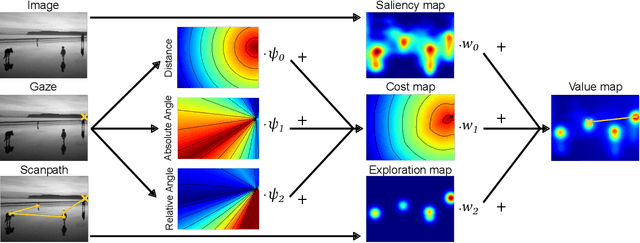

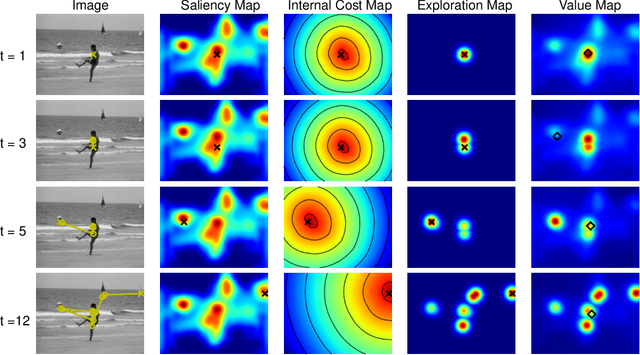
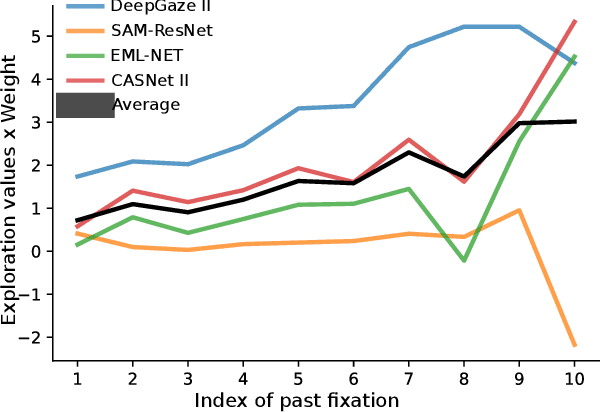
Abstract:The human prioritization of image regions can be modeled in a time invariant fashion with saliency maps or sequentially with scanpath models. However, while both types of models have steadily improved on several benchmarks and datasets, there is still a considerable gap in predicting human gaze. Here, we leverage two recent developments to reduce this gap: theoretical analyses establishing a principled framework for predicting the next gaze target and the empirical measurement of the human cost for gaze switches independently of image content. We introduce an algorithm in the framework of sequential decision making, which converts any static saliency map into a sequence of dynamic history-dependent value maps, which are recomputed after each gaze shift. These maps are based on 1) a saliency map provided by an arbitrary saliency model, 2) the recently measured human cost function quantifying preferences in magnitude and direction of eye movements, and 3) a sequential exploration bonus, which changes with each subsequent gaze shift. The parameters of the spatial extent and temporal decay of this exploration bonus are estimated from human gaze data. The relative contributions of these three components were optimized on the MIT1003 dataset for the NSS score and are sufficient to significantly outperform predictions of the next gaze target on NSS and AUC scores for five state of the art saliency models on three image data sets. Thus, we provide an implementation of human gaze preferences, which can be used to improve arbitrary saliency models' predictions of humans' next gaze targets.
AdaptiFont: Increasing Individuals' Reading Speed with a Generative Font Model and Bayesian Optimization
Apr 21, 2021

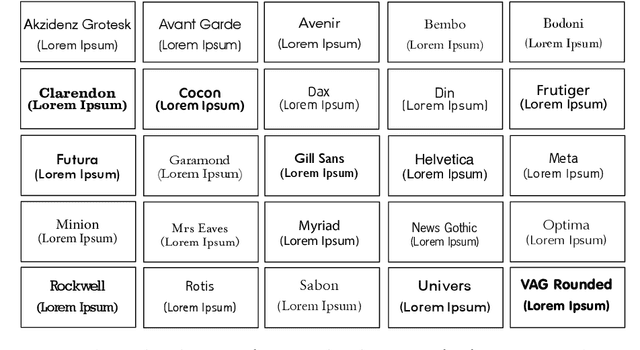
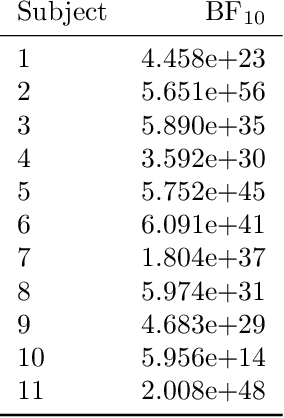
Abstract:Digital text has become one of the primary ways of exchanging knowledge, but text needs to be rendered to a screen to be read. We present AdaptiFont, a human-in-the-loop system that is aimed at interactively increasing readability of text displayed on a monitor. To this end, we first learn a generative font space with non-negative matrix factorization from a set of classic fonts. In this space we generate new true-type-fonts through active learning, render texts with the new font, and measure individual users' reading speed. Bayesian optimization sequentially generates new fonts on the fly to progressively increase individuals' reading speed. The results of a user study show that this adaptive font generation system finds regions in the font space corresponding to high reading speeds, that these fonts significantly increase participants' reading speed, and that the found fonts are significantly different across individual readers.
 Add to Chrome
Add to Chrome Add to Firefox
Add to Firefox Add to Edge
Add to Edge